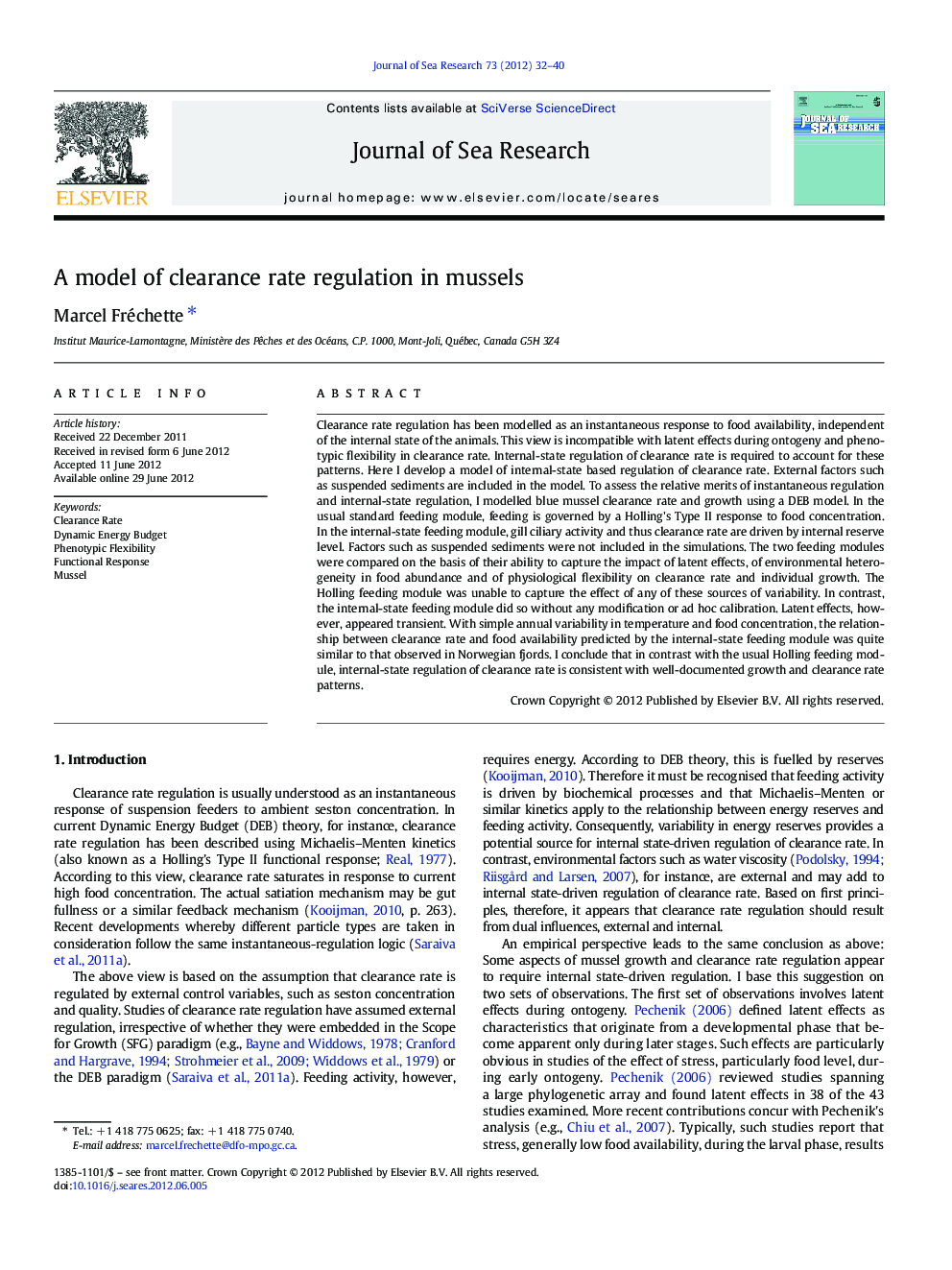| کد مقاله | کد نشریه | سال انتشار | مقاله انگلیسی | نسخه تمام متن |
|---|---|---|---|---|
| 4549909 | 1627501 | 2012 | 9 صفحه PDF | دانلود رایگان |

Clearance rate regulation has been modelled as an instantaneous response to food availability, independent of the internal state of the animals. This view is incompatible with latent effects during ontogeny and phenotypic flexibility in clearance rate. Internal-state regulation of clearance rate is required to account for these patterns. Here I develop a model of internal-state based regulation of clearance rate. External factors such as suspended sediments are included in the model. To assess the relative merits of instantaneous regulation and internal-state regulation, I modelled blue mussel clearance rate and growth using a DEB model. In the usual standard feeding module, feeding is governed by a Holling's Type II response to food concentration. In the internal-state feeding module, gill ciliary activity and thus clearance rate are driven by internal reserve level. Factors such as suspended sediments were not included in the simulations. The two feeding modules were compared on the basis of their ability to capture the impact of latent effects, of environmental heterogeneity in food abundance and of physiological flexibility on clearance rate and individual growth. The Holling feeding module was unable to capture the effect of any of these sources of variability. In contrast, the internal-state feeding module did so without any modification or ad hoc calibration. Latent effects, however, appeared transient. With simple annual variability in temperature and food concentration, the relationship between clearance rate and food availability predicted by the internal-state feeding module was quite similar to that observed in Norwegian fjords. I conclude that in contrast with the usual Holling feeding module, internal-state regulation of clearance rate is consistent with well-documented growth and clearance rate patterns.
► I derive a model of clearance rate regulation by internal state and external factors.
► The model (ISFM) accommodates variability in the response to inorganic seston.
► I study predictions of a mussel DEB model with ISFM and with Holling feeding dynamics.
► The patterns tested are latent effects, spatial variability and phenotypic plasticity.
► Only ISFM-based DEB simulations captured all patterns without recalibration.
Journal: Journal of Sea Research - Volume 73, October 2012, Pages 32–40